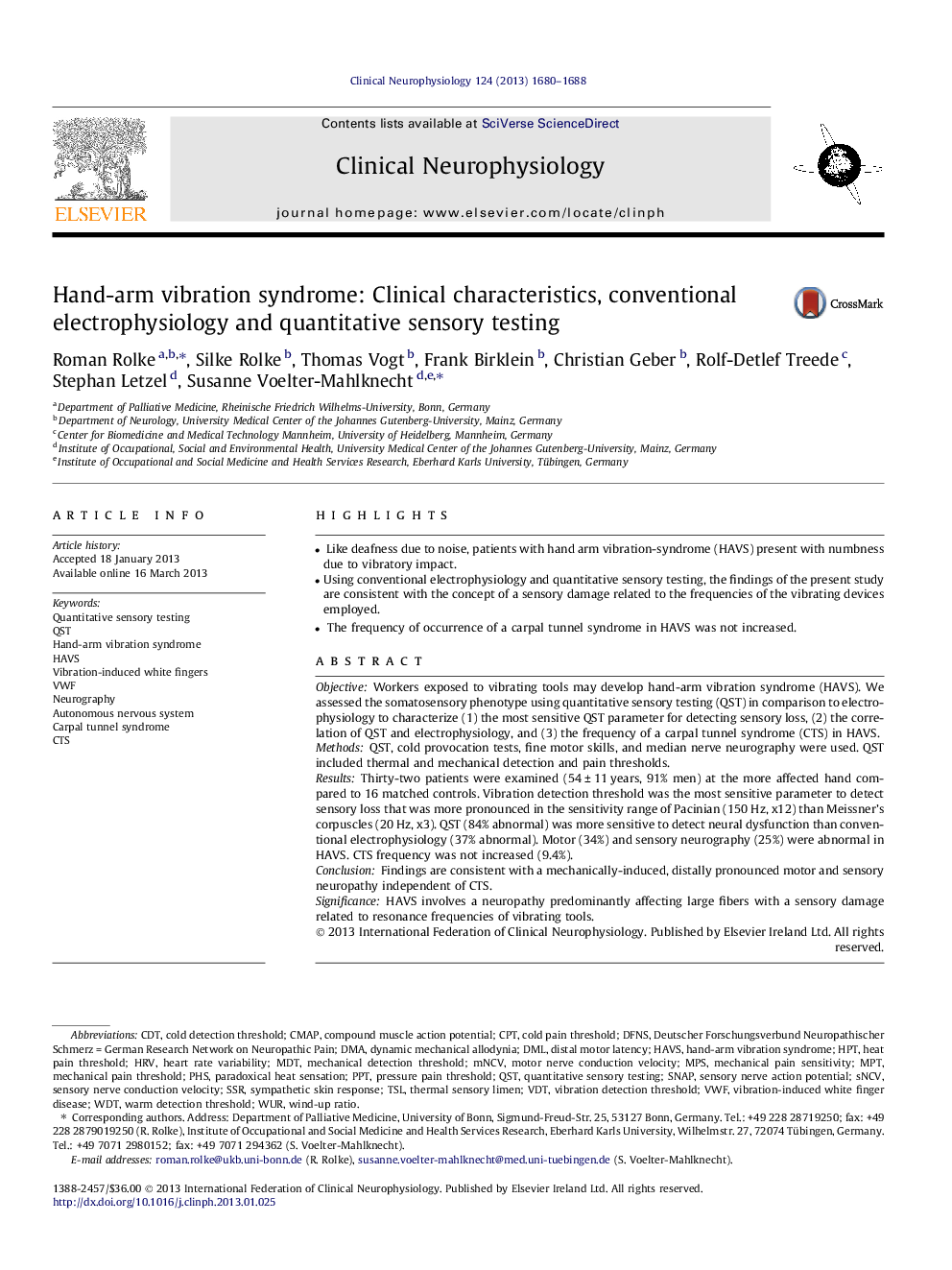| Article ID | Journal | Published Year | Pages | File Type |
|---|---|---|---|---|
| 3045195 | Clinical Neurophysiology | 2013 | 9 Pages |
•Like deafness due to noise, patients with hand arm vibration-syndrome (HAVS) present with numbness due to vibratory impact.•Using conventional electrophysiology and quantitative sensory testing, the findings of the present study are consistent with the concept of a sensory damage related to the frequencies of the vibrating devices employed.•The frequency of occurrence of a carpal tunnel syndrome in HAVS was not increased.
ObjectiveWorkers exposed to vibrating tools may develop hand-arm vibration syndrome (HAVS). We assessed the somatosensory phenotype using quantitative sensory testing (QST) in comparison to electrophysiology to characterize (1) the most sensitive QST parameter for detecting sensory loss, (2) the correlation of QST and electrophysiology, and (3) the frequency of a carpal tunnel syndrome (CTS) in HAVS.MethodsQST, cold provocation tests, fine motor skills, and median nerve neurography were used. QST included thermal and mechanical detection and pain thresholds.ResultsThirty-two patients were examined (54 ± 11 years, 91% men) at the more affected hand compared to 16 matched controls. Vibration detection threshold was the most sensitive parameter to detect sensory loss that was more pronounced in the sensitivity range of Pacinian (150 Hz, x12) than Meissner’s corpuscles (20 Hz, x3). QST (84% abnormal) was more sensitive to detect neural dysfunction than conventional electrophysiology (37% abnormal). Motor (34%) and sensory neurography (25%) were abnormal in HAVS. CTS frequency was not increased (9.4%).ConclusionFindings are consistent with a mechanically-induced, distally pronounced motor and sensory neuropathy independent of CTS.SignificanceHAVS involves a neuropathy predominantly affecting large fibers with a sensory damage related to resonance frequencies of vibrating tools.
